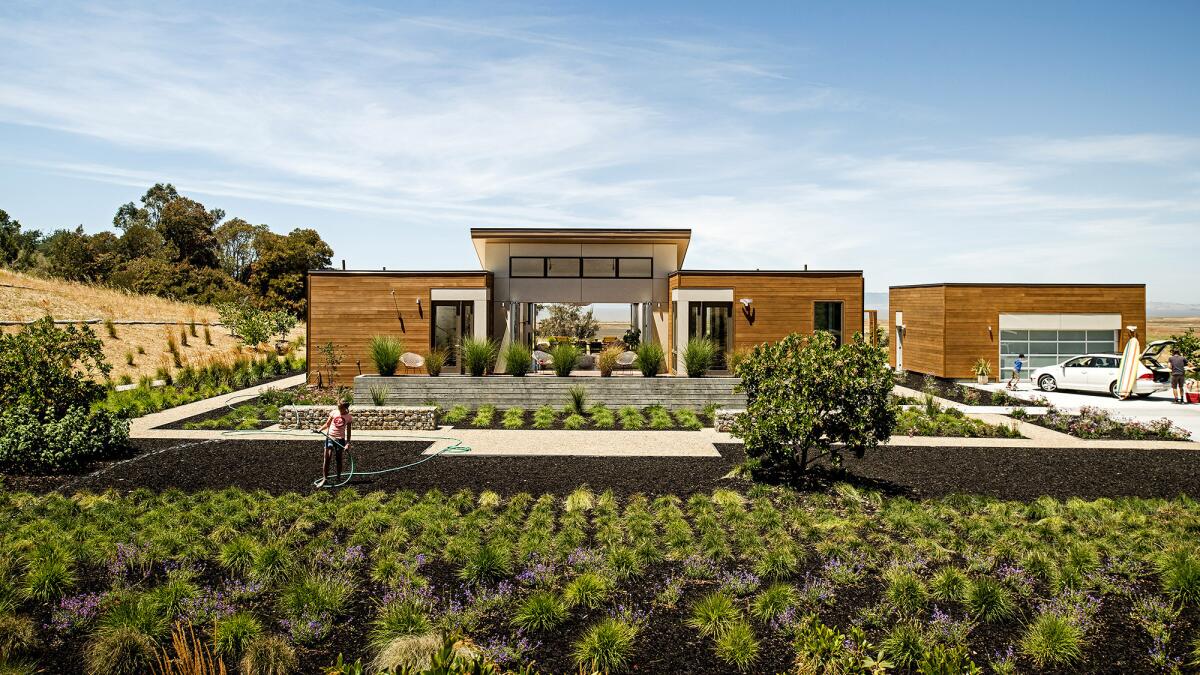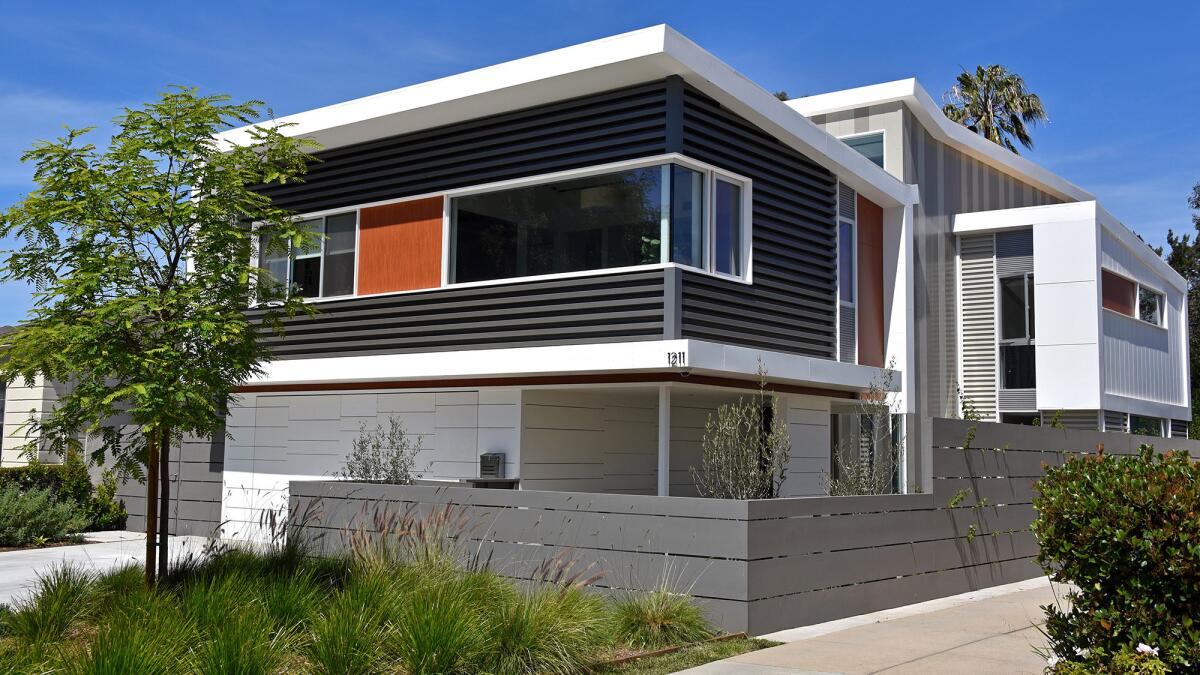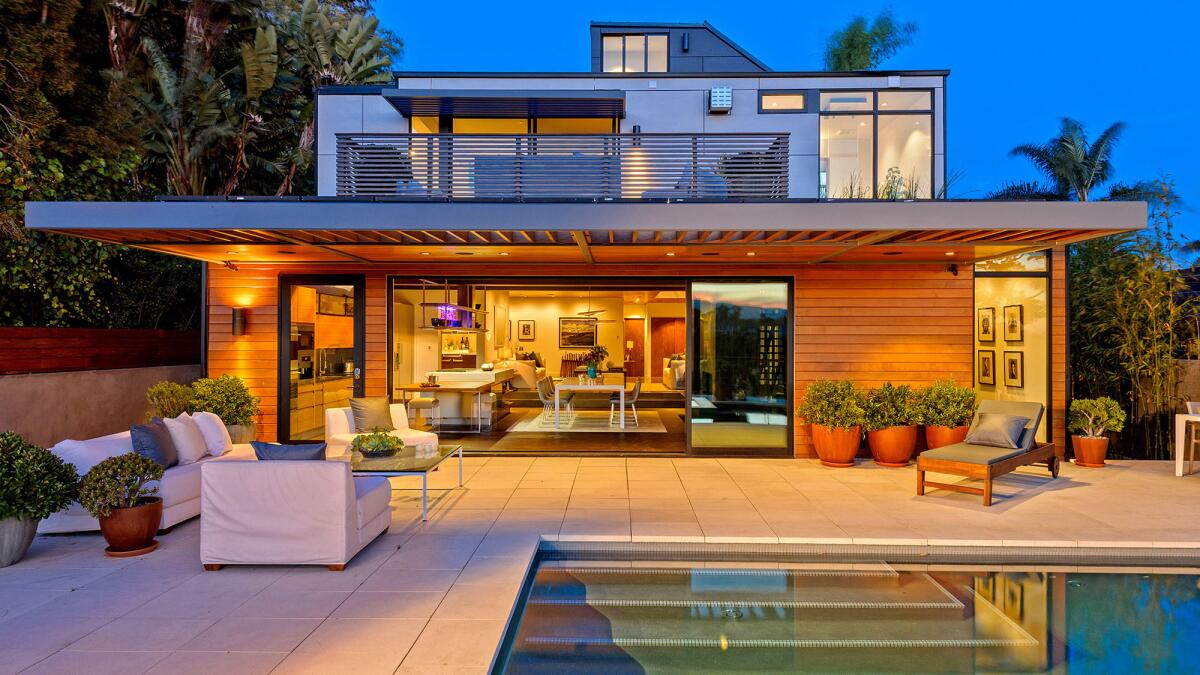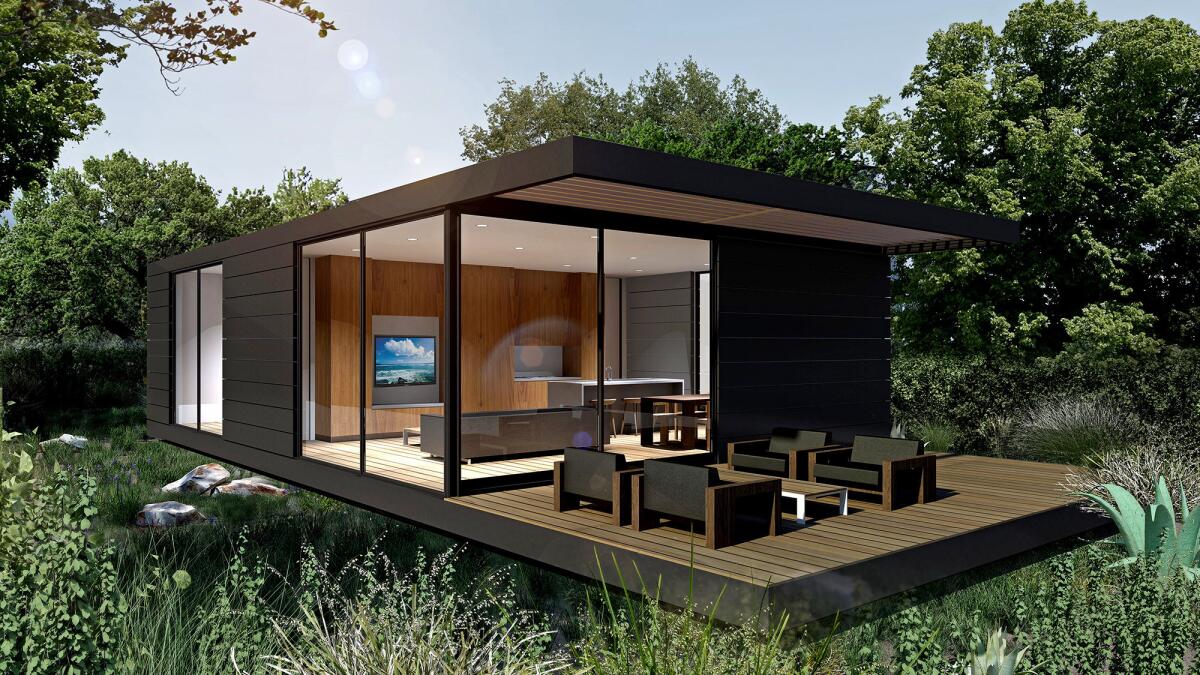Prefab homes for sophisticated tastes
- Share via
Prefab housing might call to mind mega-builders who crank out staid, cookie-cutter design lines: the Mayberry I-III or the Homestead I-IV.
When they were first introduced, prefabricated homes were known mainly for being manufactured off-site, typically in easy-to-ship-and-assemble sections.
That’s still true today, but a new breed of home builders has been thinking outside the prefab box. Using branded architects, the latest homes favor sophisticated, modernist styles with clean and often daring lines, light-infused spaces and lofty ceilings.
-----------
FOR THE RECORD
10:50 a.m. June 18: An earlier version of this story incorrectly spelled Zaha Hadid's name as Zahra. A caption accompanying the story also incorrectly labeled a Proto Home as belonging to Jonard Soriano and Angela Cheung; their home was not pictured.
------------
“Some people have a negative perception of prefabricated homes because they think that implies a cheap mobile home,” said Steve Glenn, chief executive of builder LivingHomes. “But it’s actually possible to do very high-quality work in the controlled environment of a factory. And it’s far faster and more reliable than doing the work on site.”
These upmarket prefab homes take less time to build than site-constructed property and are ready to occupy within four to eight months after ordering. Expedient factory assembly cuts costs 20% to 40%, as compared with similar site-built homes, manufacturers said.
Here are four eco-friendly builders that caught our eye. Prices do not include site prep and other costs.
Blu Homes

Blu Homes’ Vallejo factory turns out 16 architect-designed models ranging from $235,000 to $1.855 million.
The one-story Breeze, starting at $1.3 million, is the iconic trendsetter in the line. A butterfly roofline allows for 15-foot ceilings and rows of clerestory windows. NanaWalls fold out front and back, opening up the home’s entire midsection.
Also noteworthy: the Zen-like Lotus design, which starts at $725,000 for two bedrooms, and the spacious three-bedroom Modern Farmhouse, $975,000.
“We cut out the middleman and do it all — both design and engineering,” Blu Homes co-founder Bill Haney said of the firm’s 250,000-square-foot factory.
Blu Homes’ app enables buyers to set up an entire home’s look — swapping out decks, appliances, bedrooms and more.
Proto Homes

Proto Homes’ downtown Los Angeles factory creates modernist designs priced from $175 to $275 per square foot. Halton Pardee and developer Core Vision are partners.
Jonard Soriano and his wife, Angela Cheung, chose Proto Homes’ midline home package, customizing it with upgraded kitchen appliances. In 2013, they moved into their 2,200-square-foot Burbank Proto Home after eight months of construction. Cantilevers frame the midcentury look with ceilings that top out at 20 feet. Base price: $490,000.
The couple favored the firm’s use of prefabricated sections and walls, rather than entire modules, a system the company calls Flex Zone. The second floor, currently configured as two rooms, can be swapped out for four.
“I can even move the existing walls myself,” Soriano said.
Proto Homes consolidates all electrical, plumbing, and mechanical systems into a single space it calls the “core,” allowing for easy access.
“That attracted us,” Soriano said. “I owned a traditionally built home before, and maintenance was a headache.”
LivingHomes

Santa Monica-based LivingHomes features two branded architects, Ray Kappe and KieranTimberlake, as well as lower-cost designs in its CK and C6 series. Price range: $139 to $230 per square foot.
Kappe’s designs include a home set in multilevel planes, clad in cement and cedar, and topped by a “living roof” garden ($665,000). Home module construction is outsourced to nine U.S. factories. All homes are green-certified as LEED Silver or above.
Sterling Scott and Michael Abels recently bought a postmodern designed home clad in cement board, from the firm’s CK series, for $300,000. The 1,700-square-foot, three-bedroom home, built in four sections, will be craned onto a Silver Lake slope in July.
Scott said navigating the city permit process was vexing during previous build attempts, but was straightforward with LivingHomes.
“LivingHomes knew all the requirements, and the city had few questions,” he said, adding that buying a factory-built home “takes out all the unknowns, especially the cost.”
Revolution Precrafted Properties

Revolution sources its designs from 30 architects, many with stellar credentials: Zaha Hadid, I.M. Pei, Rem Koolhaas, Tadao Ando and Richard Meier. Headquartered in Manila, Revolution outsources manufacturing to various worldwide factories. Base price: $250,000 to $500,000.
The Instrumental, by Marmol Radziner, is warmly modernist: A cantilevered glassed rectangle includes deck extensions that neatly tie the building to surroundings.
The 517-square-foot one-bedroom: $260,000. The 1,033-square-foot two-bedroom: $400,000.
Revolution founder Robbie Antonio calls his limited-edition creations “architectural collectibles.” They also include Casa A, a 485-square-foot cylinder-shaped pod with a retractable roof, designed by SelgasCano, and the 1,022-square-foot spaceship-styled Nest Pod by Fernando Romero, both not yet priced.
Sign up for Essential California
The most important California stories and recommendations in your inbox every morning.
You may occasionally receive promotional content from the Los Angeles Times.



